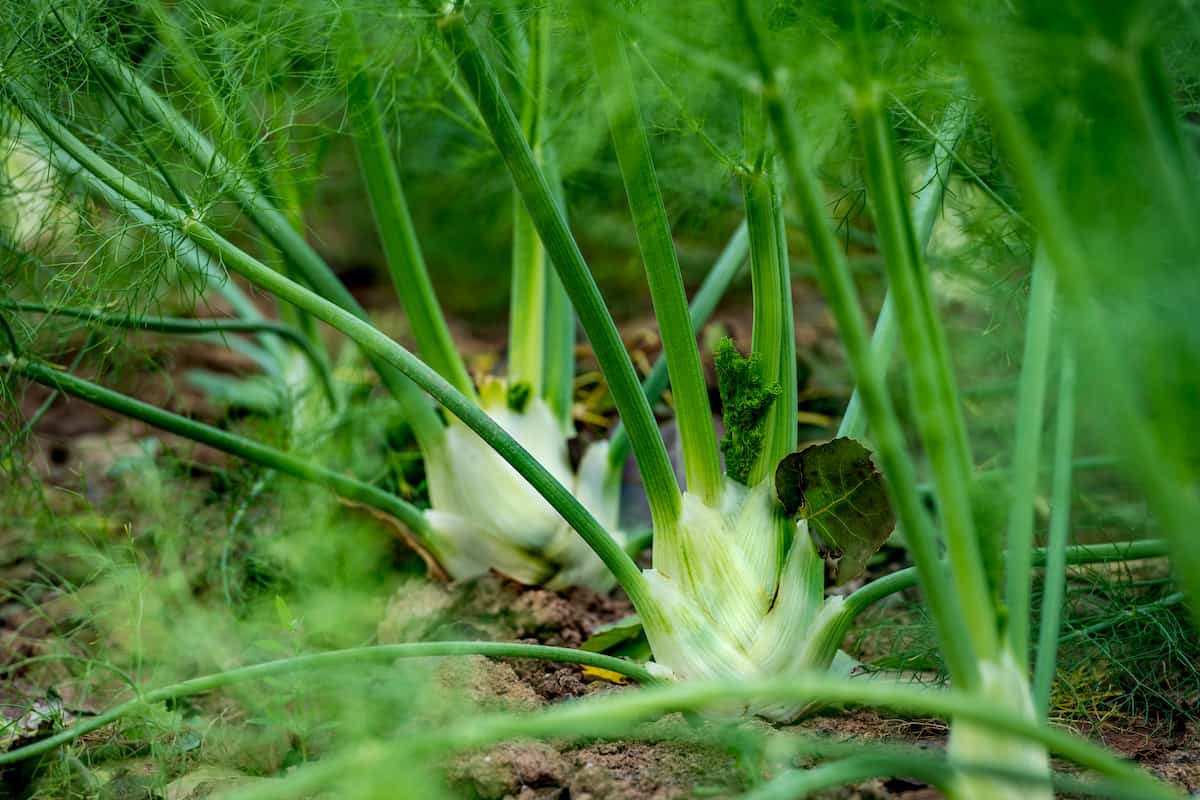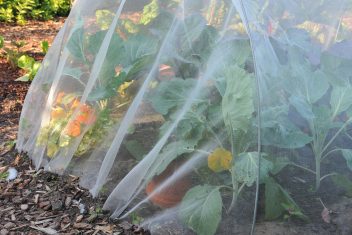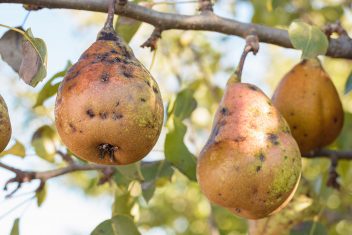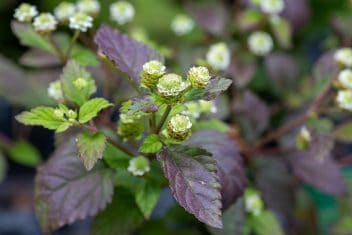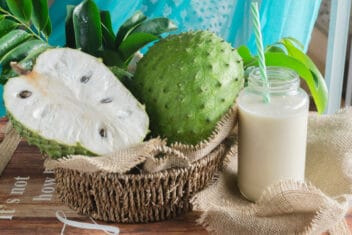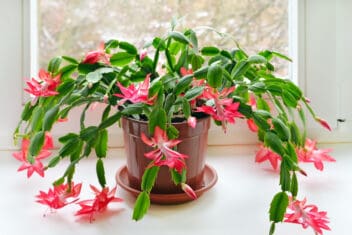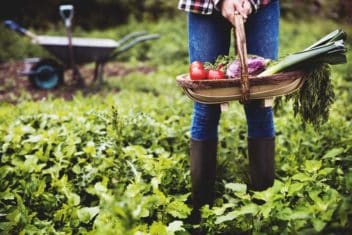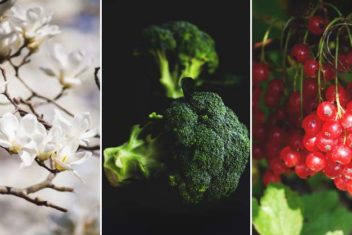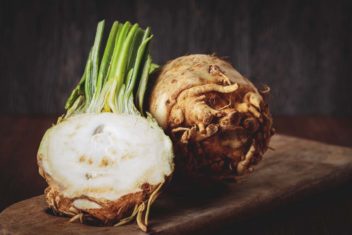When most people think of food in the medieval era, they likely either think of grand royal banquets or peasant gruel. In fact, that’s far from the truth. They had an incredibly varied diet that you can mimic today to improve your health and the variety in your garden.
Whether you’re an SCA member trying to adhere to era-specific recipes, or want to try something different, you’ll find some interesting varieties here.
Let’s take a look at 25 medieval vegetables and herbs that you can grow in your own garden.
What Medieval People Really Ate
Most people imagine that medieval food was quite tasteless and bland, scraped together from shriveled roots and paltry gardens. Furthermore, they assume that medieval vegetables were limited to cabbage and turnips, mostly thanks to fantasy novels and films.
People’s diets in that era were actually quite varied, especially since the items that were in season varied from week to week.
Add to that the fact that they had access to seeds from across Europe, the Middle East, North Africa, and Asia, and you can imagine that the average table boasted quite a bit of variety.
Some of the herbs and veggies that were common in the Middle Ages you may already be familiar with, such as parsley and eggplants. Others are pretty rare in modern gardens, but they’re worth a comeback.
Vegetables
Whether a person living in the medieval era was highborn or poor, vegetables would have made up the majority of their diet.
For example, pottage—a thick soup or stew—would have graced just about everyone’s table on a regular basis. Ingredients would have differed based on social class, but the base would have been comprised of plants.
This wasn’t just because meat and fish were scarce, however. There were many social and religious laws in place regarding which foods were permitted or forbidden. Most veg, however, were always a-okay.
Note that many of these vegetables and herbs aren’t Euro-centric. We’re including plants from the Near and Middle East, and Asia as well. The Silk Road facilitated extensive trade, so people were able to expand their culinary repertoire significantly.
1. Orach (Atriplex hortensis)
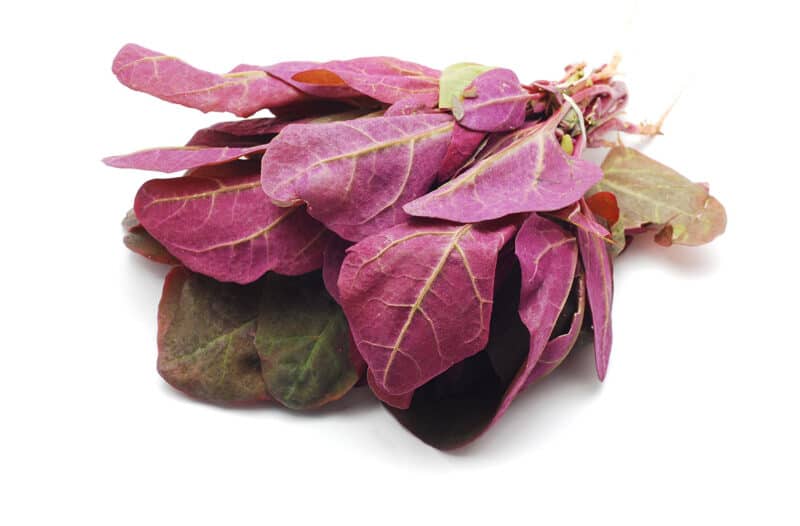
This gorgeous plant was a common pot herb in the Middle Ages and is regaining popularity now. We’re not sure why it fell out of favor in the 18th century, but we’re happy to see it enjoying a comeback.
It’s related to Swiss Chard and has a similar flavor, plus it’s even hardier. You can grow orach right into late autumn, and it’ll sweeten after a frost. Although the reddish-pink variety is most common, it’s also available in deep purple, and vibrant lime green.
2. Lovage (Levisticum)
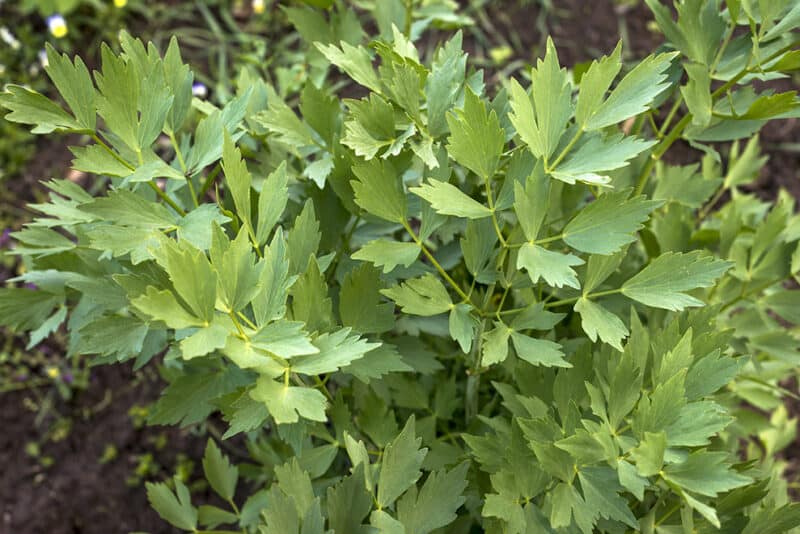
If you like celery-like flavors, you should definitely consider adding lovage to your medieval garden. It’s a perennial plant, so you can sow it once it’ll come back for years.
It’s also gorgeously multi-purpose. The leaves are lovely when eaten raw, add the root to soups, stews, and roasts, and harvest the seeds to use as seasoning.
3. Cardoon (Cynara cardunculus)

Isn’t that a great name? Try saying it aloud a couple of times just for fun. This perennial “artichoke thistle” is related to the common globe artichoke, and is native to the Middle East and the Mediterranean.
This plant has been a staple food in Morocco, Greece, Algeria, Tunisia, Libya, and Portugal for thousands of years, and with good cause. The stems are delicious, as are the flower buds.
Despite their arid origins, cardoons do best in a cooler growing season and take about 100 days to mature. They thrive best in zones 5-8, in well-drained, nutrient-rich soil that’s full of aged manure or compost.
4. Eggplant/Aubergine (Solanum melongena)
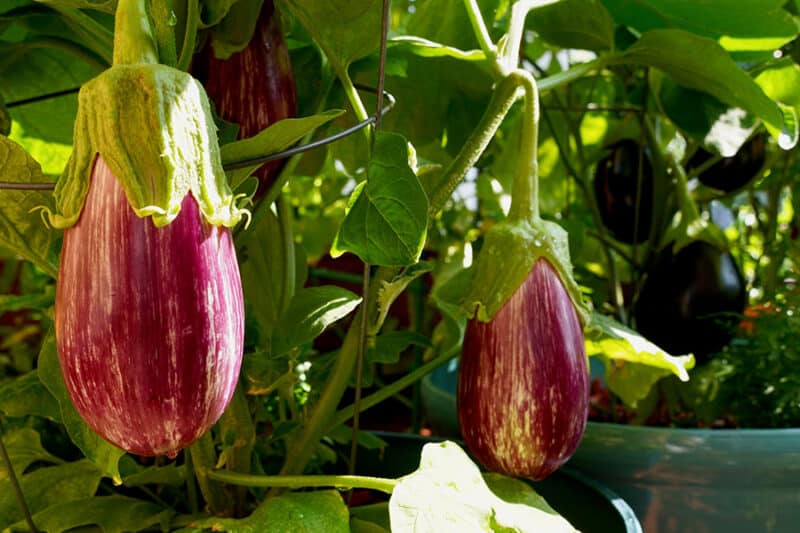
You may be surprised to consider this a medieval vegetable, but it was incredibly popular in that era. Eggplants, aka aubergines, originated in either India or China, and were introduced to Europe and the Near East by traders around the 6th century CE.
Try to find heirloom seeds if you’re aiming for era-specific authenticity. Taiwanese, Spanish, Syrian, and Turkish varieties are a few to consider, but feel free to explore.
These heavy feeders need a ton of sunshine, as well as nutrient-dense, very well-drained soil. Amend with plenty of sand and/or perlite to ensure happy plants.
5. Salsify (Tragopogon porrifolius)
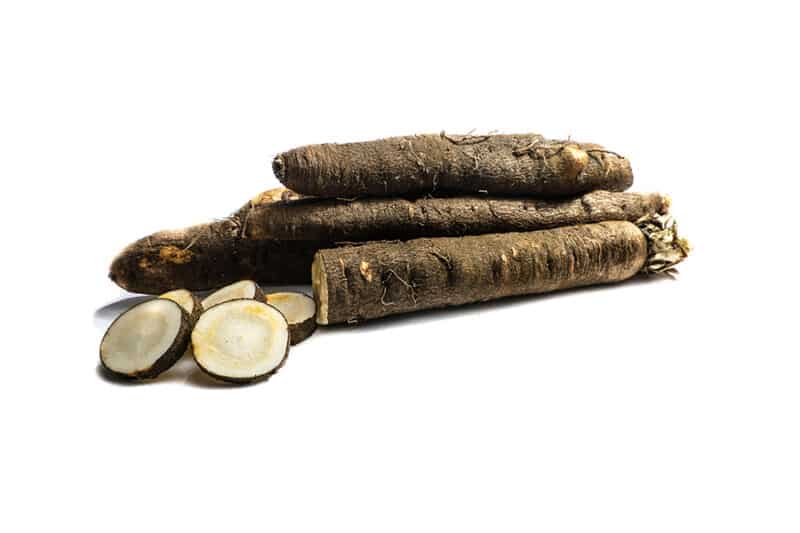
If you haven’t tried salsify yet, it’s a must-have for your medieval vegetable garden. It tastes like a combination of turnip and oyster—sounds odd, but it’s delicious—and was treasured right up until the 18th century.
It needs deep, rich soil, and a fair bit of sun to thrive properly. You can also try growing its darker cousin, scorzonera, while you’re at it.
6. Skirret (Sium sisarum)
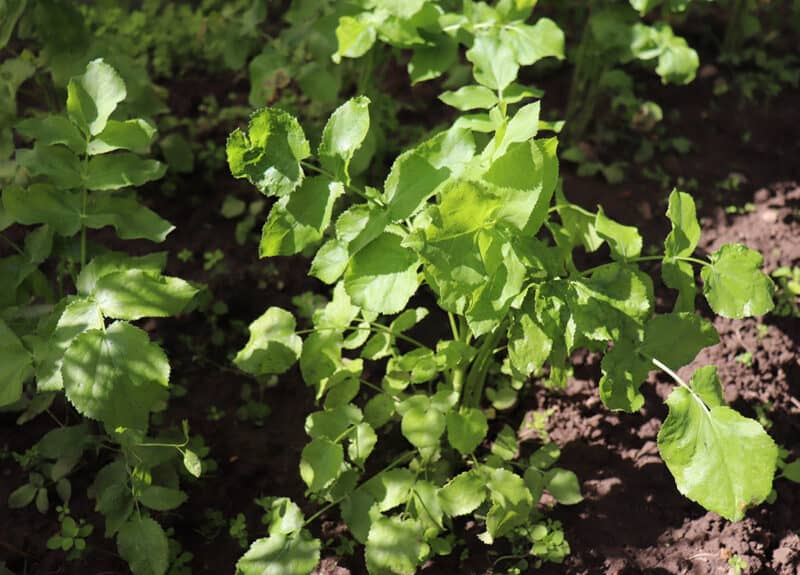
Do you like carrots and parsnips? Then definitely add skirret to your list. Like the aforementioned vegetables, this one is another member of the carrot (Apiaceae) family and has delicious roots you can use for a variety of recipes.
Like carrots and other roots, it needs loose, well-draining soil that has a fairly high sand content. It likes plenty of sunshine but does best in cooler weather. If you’re growing this in your medieval vegetable garden, consider cultivating it as an autumn crop.
7. Good King Henry (Chenopodium bonus-henricus)
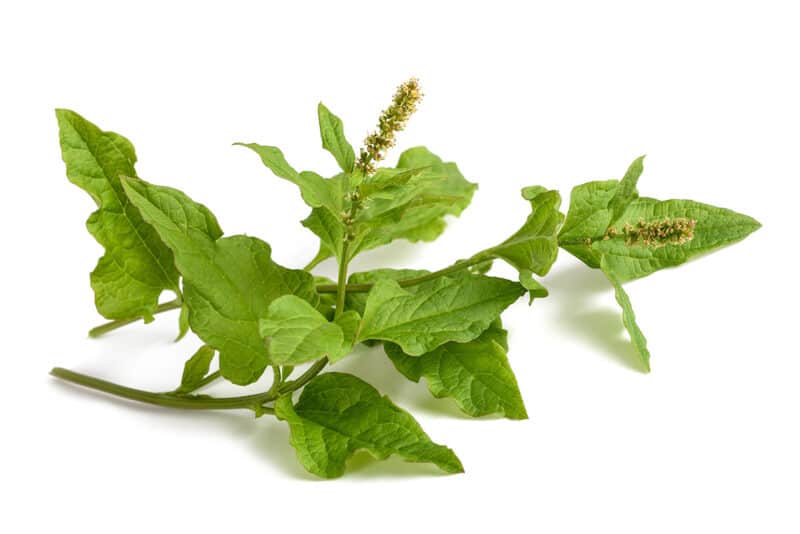
If you like spinach, chard, and other similar-tasting greens, get your hands on some Good King Henry seeds as soon as possible. This perennial vegetable was a staple right up until the 17th century, and it’s making a comeback for homesteaders and heirloom aficionados everywhere.
The seeds are notoriously difficult to germinate, as they need cold stratification and are very fussy. For example, unlike most other seeds, only the viable ones will float.
You can try direct-sowing them into well-drained soil just before winter kicks in if you’re feeling brave. Otherwise, start the seed in sterile potting mix, sand, or perlite, and keep them in the fridge for 10-12 weeks.
Then move them under direct grow lights to trigger the germination process. Transplant healthy seedlings into moist, rich, well-drained soil, in partial shade.
Good luck! These plants are difficult, but once established, will keep coming back pretty much forever.
8. Alexanders (Smyrnium olusatrum)
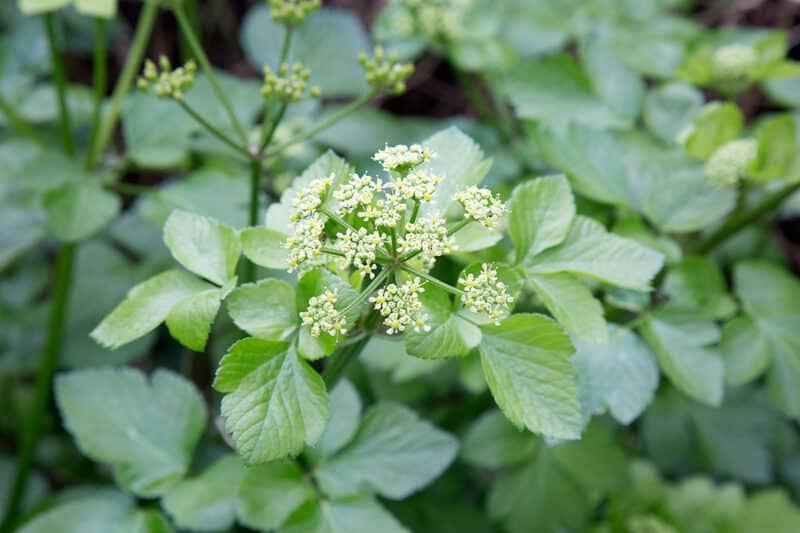
I first came across this plant while watching Ruth Goodman’s Tudor Monastery Farm series, and had to try it. It’s a member of the Apiaceae family, like carrots and Queen Anne’s Lace, and the entire plant is edible. I’d say it tastes quite a bit like rapini, with a pleasantly bitter flavor.
This is a tender biennial native to the Mediterranean and was introduced to many European countries by the Romans. It doesn’t do well in cold weather and is only hardy to zone 6. Grow it in moist, well-drained, slightly sandy soil, in full sun to partial shade.
9. Cabbage (various Brassica oleracea cultivars)
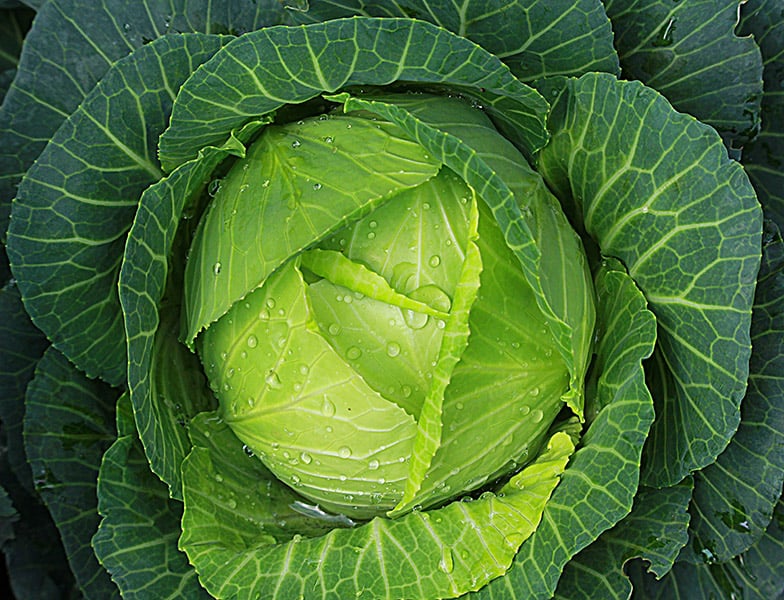
Among all the medieval vegetables, this was a dietary staple from England to China. Cabbage was ever-present in the aforementioned pottage, was used to create rolls and wraps, braised, stuffed, boiled, broiled, roasted… you name it.
Every single garden would have been packed with various cabbage cultivars, ranging from purple and green heads to Savoy-types, kales, and more.
These hardy plants do best in partial shade, as they’re prone to bolting in high heat and direct sunlight. I actually grow mine in full shade, and they turn out wonderfully. They get sweeter and more tender after a frost and can be harvested well into the winter.
10. Fava Beans (Vicia faba)
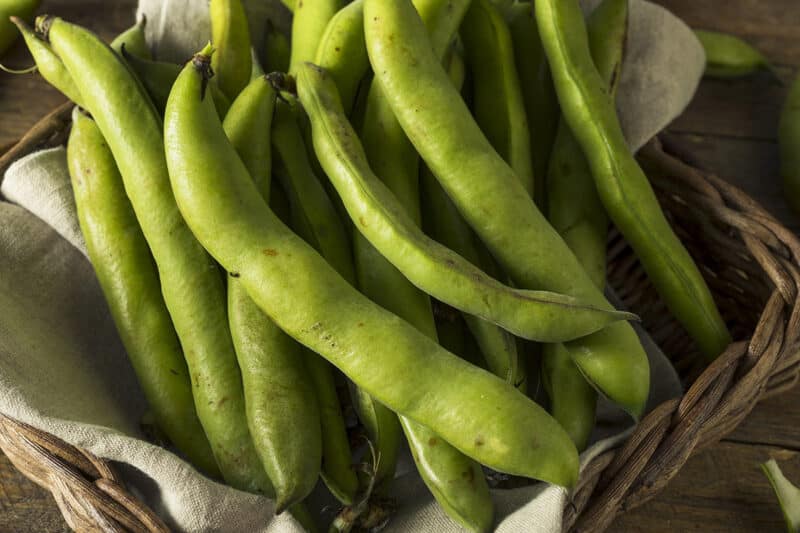
When you come across recipes for medieval bean dishes, they often mean fava beans. Also known as broad beans, they’re large, flat, meaty, and really quite delicious. Although they were most often used in stews and soups, these beans were also mashed and seasoned and used in stuffings.
The plants can thrive in just about any soil, but you’ll get healthier, more productive crops in moist, compost-rich, well-drained soil. They need a lot of sunshine, but also need to be sheltered from strong winds. Favas are also a great cool-weather crop to add to an autumn garden.
11. Watercress (Nasturtium officinale)
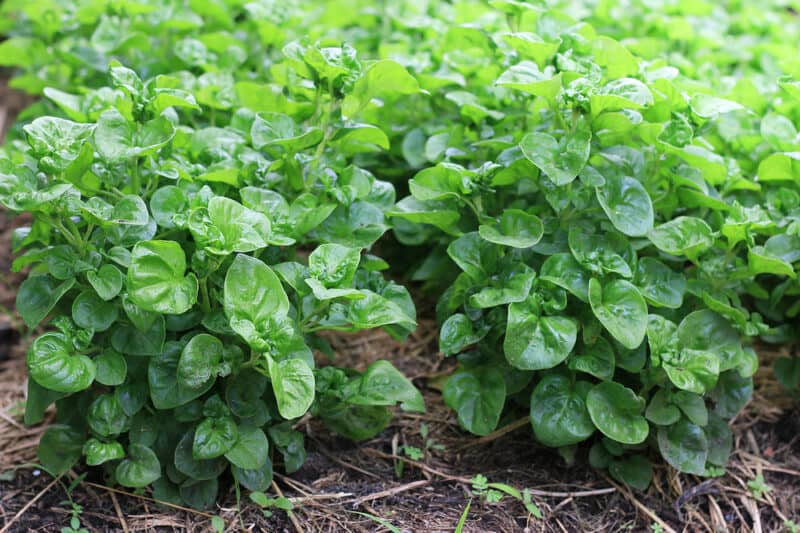
Did you know that watercress was one of the first known leafy vegetables that humans ever ate? If you’ve ever tasted this peppery green, you’ll understand why. Its spicy flavor is similar to that of its cousins arugula, mustard, and radish, and it’s absolutely packed with vitamin C.
If there’s a wet or marshy area on your property that you tend to get frustrated with, don’t fret. That area is perfect for cultivating watercress, especially if it gets a fair bit of sunshine. You may need to amend it with potassium- and phosphorus-rich fertilizer now and then, as these plants are heavy feeders.
Note: If there’s a pond or other water feature in your medieval garden, consider growing your watercress in that, instead. After all, they’re designed to thrive in water: might as well take advantage of every growing space available.
12. Fennel (Foeniculum vulgare)
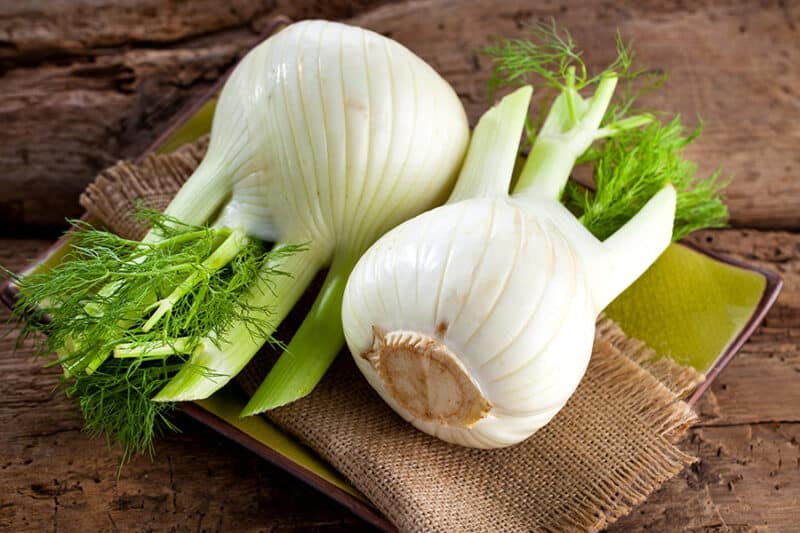
Few medieval vegetable gardens would have been without this fabulous plant. All fennel parts are edible, from its crisp, sweet bulb through to its frilly leaf fronds, and strongly flavored seeds.
Although it likes well-drained, slightly acidic soil, it will thrive just about everywhere as long as it gets full sun. My soil is quite chalky, and fennel seems to enjoy that quite well. It’s perennial in zones 6 and up, but will also self-seed enthusiastically in lower zones, so it’s sure to show up year after year.
13. Purslane (Portulaca oleracea)
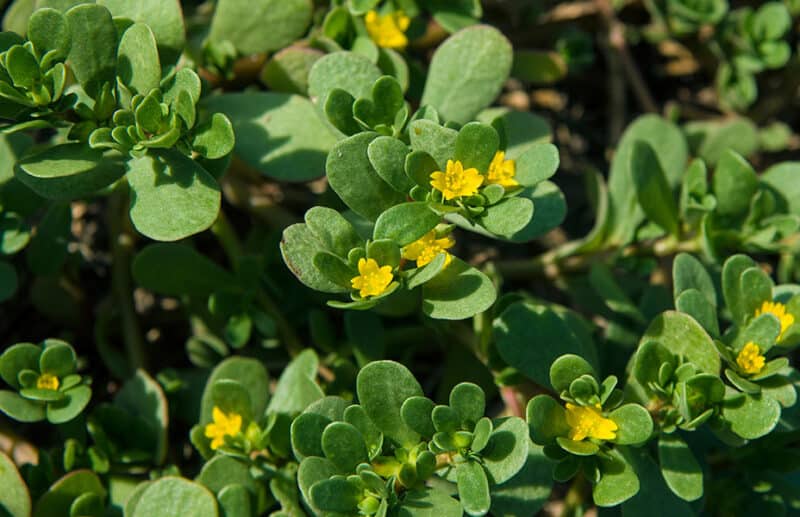
This common “weed” was cultivated as a salad herb, and with good cause. It’s a prolific perennial succulent with crunchy, lemon leaves, and thrives in even the poorest soil. I’ve sown it on the sandy hillside in front of my house, and harvest it regularly from late spring through late autumn.
Eat it raw, especially in dishes like tabbouleh. Just don’t cook it, unless you’re really into gray, slimy vegetables.
14. Purple or Red Carrots (Daucus carota subsp. sativus)

The orange carrots we know and love today weren’t cultivated until the late 16th century. Before that, they were generally purple, red, and yellow. If you’d like to add more color to your salats, try cultivating some heirloom varieties.
Since roots grow best in loose soils, amend yours with a fair bit of sand and/or perlite for best results. If growing in containers, make sure they’re quite deep, and have plenty of good drainage. And be sure to use the carrot greens in dishes, along with the roots. After all, nothing went to waste in a medieval kitchen.
Herbs
Now, when it comes to preparing food, seasonings are absolutely vital. Those of higher rank could have afforded fancy spices imported from the East, such as pepper, allspice, cinnamon, and nutmeg. Lower classes would have had to make do with herbs that they either gathered from the wild, or cultivated in their own gardens.
Either way, they would have been added to pretty much every meal to add some flavor to the foods they were eating. Can you imagine dishes prepared without any seasonings? Well, neither could they.
Below are several of the most common, and most beloved herbs of that era.
15. Sweet Bay (Laurus nobilis)

If you’re in zones 8 through 11, consider growing a bay laurel tree or bush in your medieval garden. These trees are absolutely gorgeous and can be pruned into stunning decorative topiaries.
Since they’re Mediterranean in origin, they require quite a bit of heat and sunshine to thrive, as well as well-draining soil.
Use the leaves to season soups and stews, but don’t eat them, as they can cause stomach upset.
16. Angelica (Angelica officinalis)
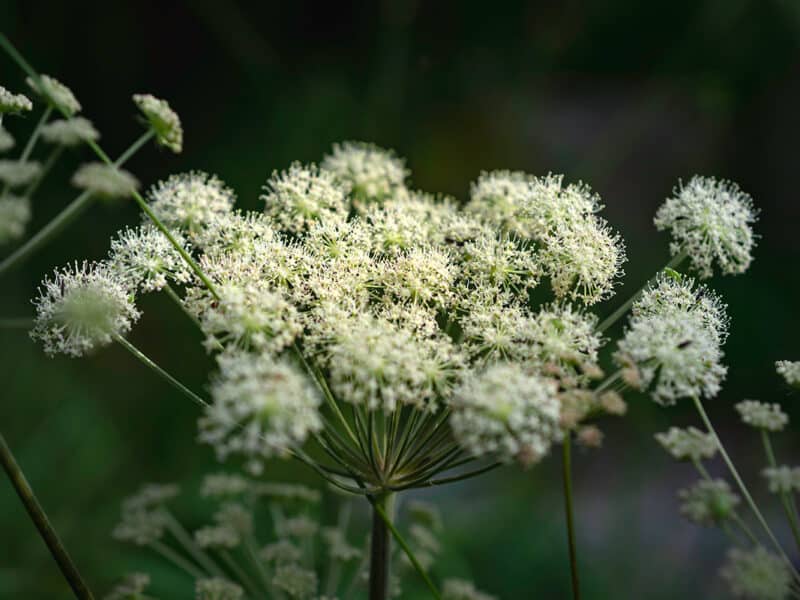
This lovely little plant was prized by the Norse and Anglo-Saxons, who introduced it to the UK. The stems, roots, and leaves are all used to flavor dishes ranging from breads and stews to desserts.
Note: if you’d like to harvest the leaves all season long, cut off the flowering heads as soon as they appear.
Cultivate this self-seeding biennial in rich, well-draining soil, situated in partial shade.
17. Marjoram (Origanum majorana)
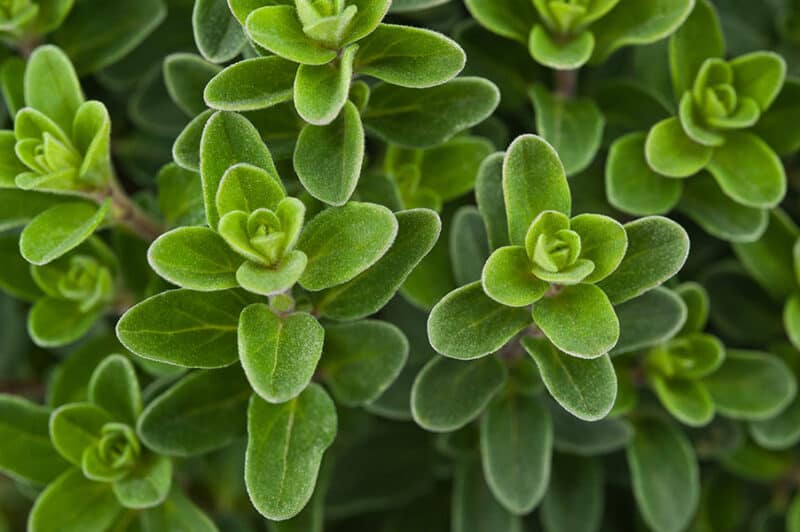
As with most Mediterranean herbs, this one likes well-drained soil and lots of direct sunshine. It can be invasive, like its cousin oregano (and most other mint family members), and is best grown in pots unless you’d like it to take over your entire garden.
Marjoram has a sweeter, gentler scent than true oregano, and was often used as a strewing or washing herb to lend a pleasant scent to the home environment. Try adding it to your herbal tea! Bees love it too, so it’s a wonderful companion plant to draw pollinators to your garden.
18. Alecost (Tanasetum balsameta)
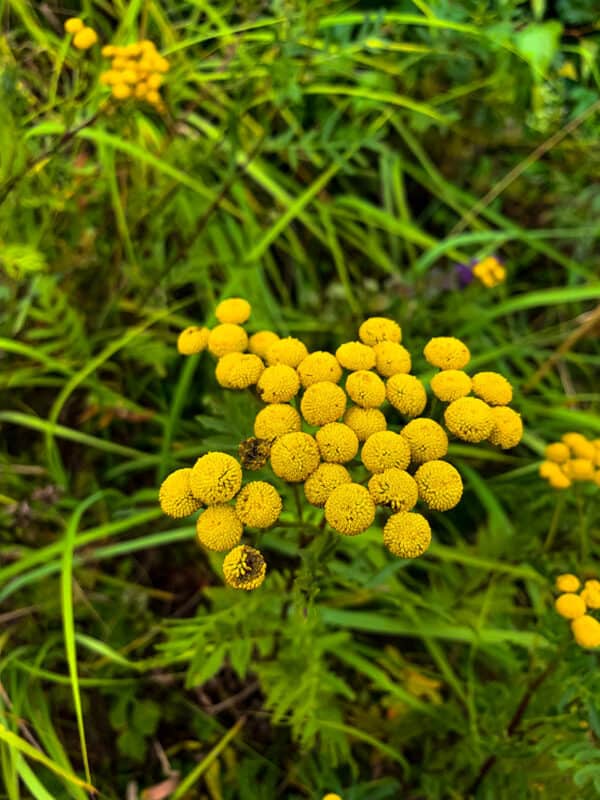
This herb is also known as “costmary“, and was brought from central Asia to Spain and Portugal during the medieval era. Its common name comes from the fact that it was used to add a pleasant bitter note to ale during the brewing process. It has a bold flavor, so it’s best used sparingly. If you’re into home brewing, try adding a bit to your next batch of beer.
It’s incredibly difficult to cultivate from seed, so it’s best to buy an established plant from a garden center.
Grow it in compost-rich, well-drained soil, in full sun. It can survive in partial shade, but won’t flower unless it gets a lot of direct sunshine.
19. Parsley (Petroselinum crispum)
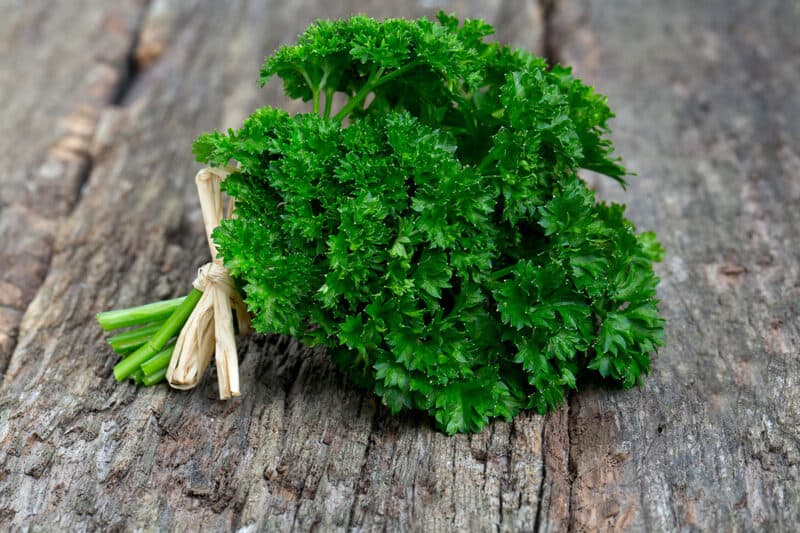
Parsley was one of the most ubiquitous herbs during the medieval era, and tons of it would have been grown in royal, monastic, and peasant gardens alike. It was eaten raw as a salad herb, used to season poultry and fish, and chewed to sweeten the breath.
This was also a key ingredient in the popular “Tarte for Ember Day“, which was an egg-based, herbed custard tart. It could be eaten during Lent, or other times in which meat and fish were forbidden.
It grows best in rich, moist soil, with full sun or partial shade. Parsley is also an ideal companion plant to medieval vegetables like carrots and peas.
20. Chervil (Anthriscus cerefolium)
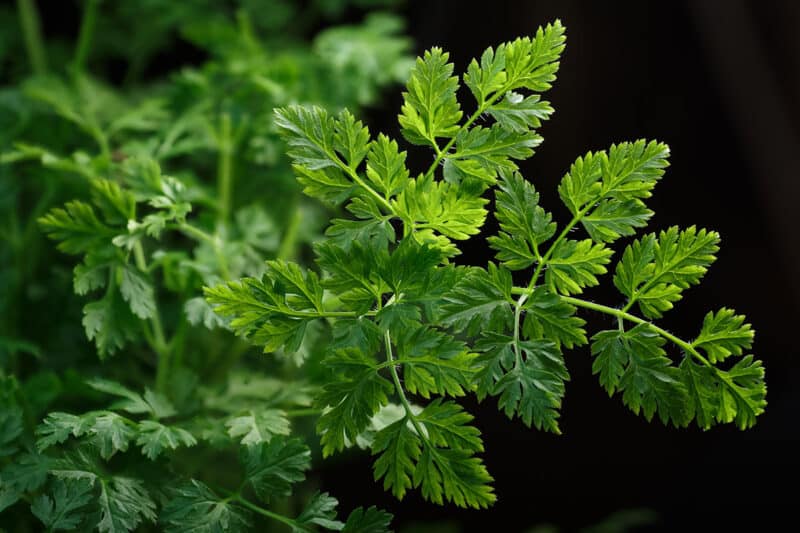
This fragrant member of the parsley family tastes like a combination of basil and anise, and is often used to flavor egg dishes, cooked carrots, and delicate soups. In addition, it’s also one of the traditional fine herbs (fines herbes) in French cuisine, together with parsley, chives, and tarragon.
Chervil doesn’t like to be transplanted, so you’ll need to sow it directly into a cool, moist, shady location. It’s prone to bolting in direct sunlight. This makes it ideal for shady herb gardens.
21. Savory (Satureja spp.)
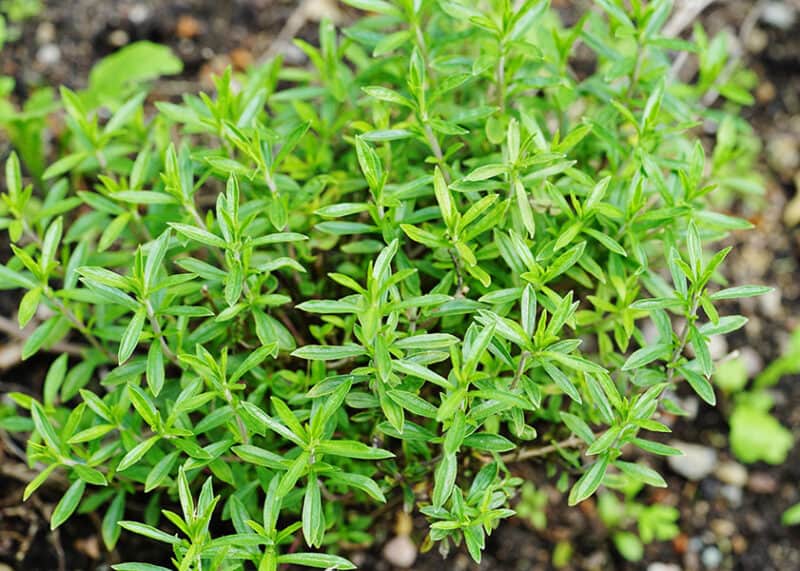
You’ve probably tasted this herb countless times, but few people seem to grow it. Savory comes in summer and winter varieties, the former being an annual, and the latter a hardy perennial. Both are ideal for roasted root vegetables, game meats, or in a bouquet garni for soups and stews.
*Tip: this herb has always been known as “the bean herb”. Add it to your bean dishes to season them and reduce any potential gastric distress. Additionally, if you add it to water in which you’re cooking cabbage or broccoli, it’ll help reduce cooking aromas.
These plants need a lot of directly sunshine, and light, but rich soil. Amend yours with sand or perlite and aged compost for best results.
22. Dill (Anethum graveolens)
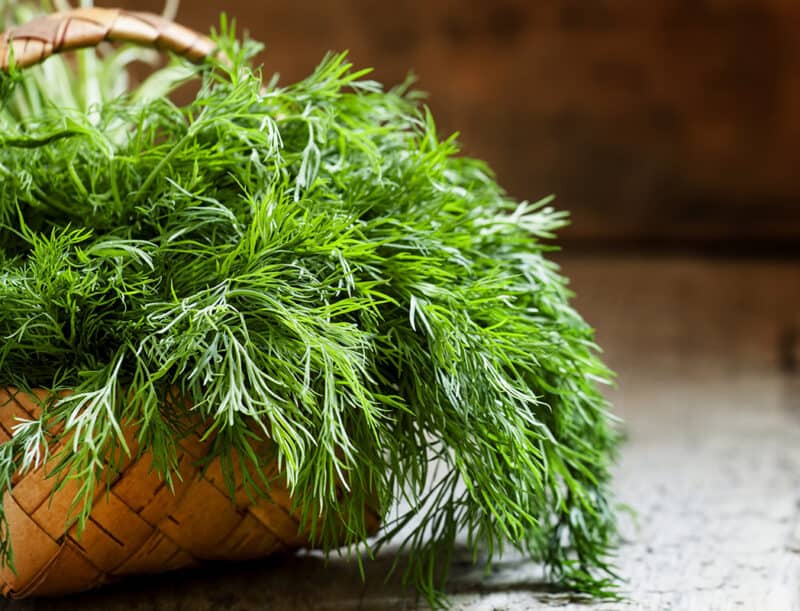
One of the most treasured herbs for pickle lovers everywhere. Dill has been a staple seasoning in Nordic and Slavic cuisine for thousands of years, and can be found in all manner of recipes for egg, fish, and vegetable dishes.
This self-seeding annual likes loose, moderately fertile soil, and a mix of sun and shade. It’s also a great companion plant for brassicas, so direct-sow the seeds generously in amongst your cabbages and kale.
23. Sage (Salvia officinalis)
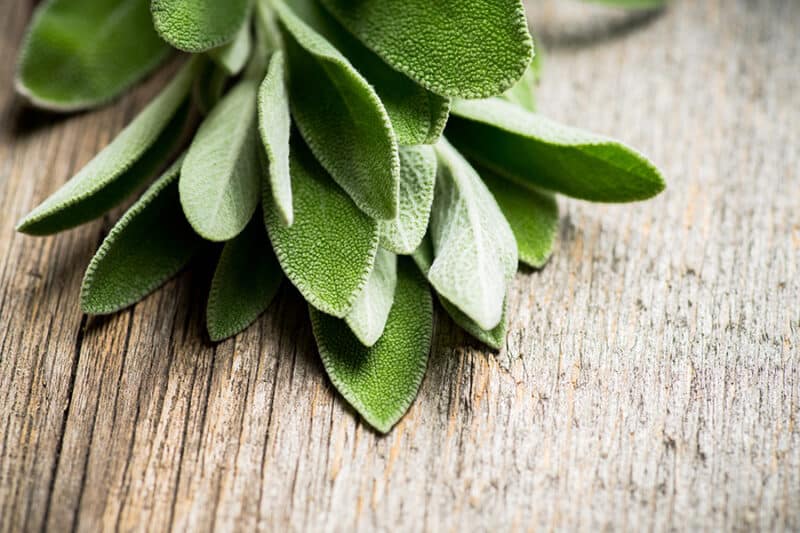
This is one of the most ancient, and most popular herbs to grow in amongst your medieval vegetables. It’s excellent for seasoning just about any savory dish, and can even be added to white wine for a refreshing summer drink.
Sage loves heat, sunshine, and loose, well-draining soil. Mine loves the sandy patches up on the hillside, but I’ve grown it just about everywhere, from zones 3 through 11.
24. Rosemary (Rosmarinus officinalis)
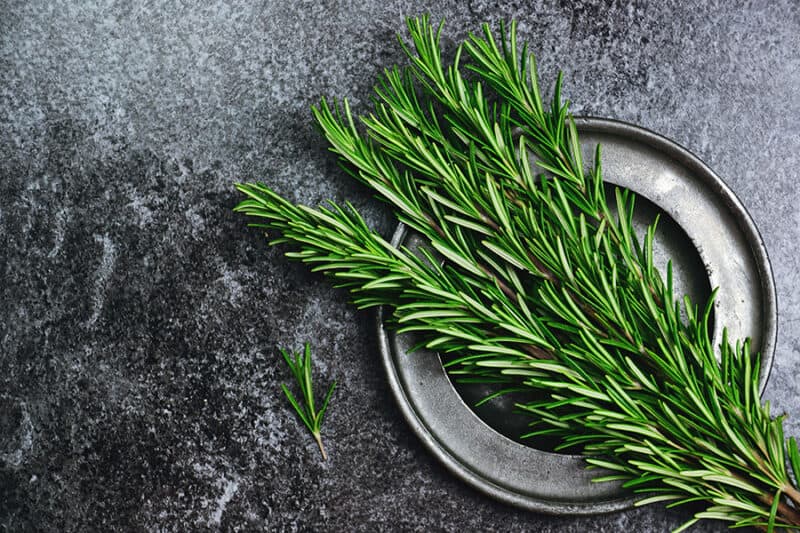
Another gorgeous evergreen shrub that you can prune into festive topiary shapes. This herb was one of the most popular in the middle ages and was used to add a savory note to bread and other baked goods, as well as roasted meats.
Since it’s a Mediterranean herb, you know it’ll thrive well in slightly dry, well-drained soil, with plenty of light and warmth. If you’re growing in zones 5 and below, plant yours in pots so you can bring them indoors during the winter months.
25. Tarragon (Artemisia dracunculus)
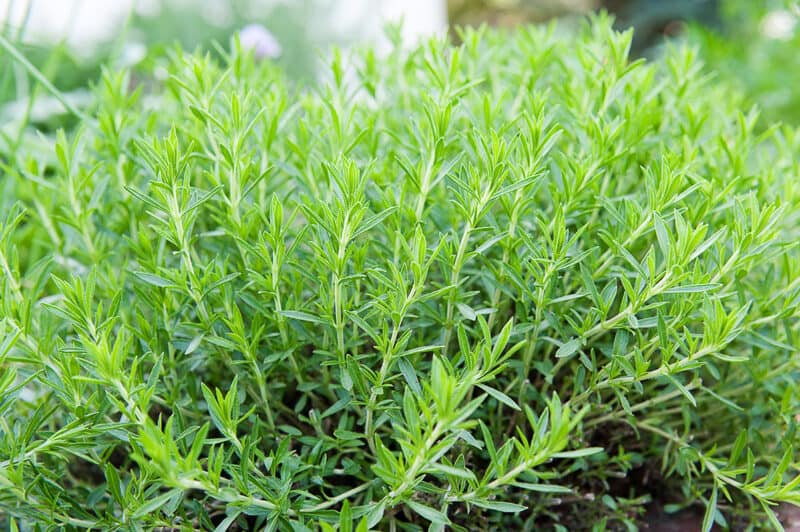
Known as estragon in French (hello Norman conquest), this herb has an interesting flavor that seems to combine lemon and pepper with licorice and mint. It’s a heavy feeder that needs deep, compost-rich, loamy soil, and plenty of water. Use it to flavor chicken dishes, or to add a special zing to this week’s pottage.
Mmm. Pottage.
If you’re cultivating a glorious garden full of medieval vegetables, be sure to add some decorative pieces to really evoke the spirit of that era. For example, lash together long branches to create bean cage trellises instead of using fancy store-bought versions.
Prune those shrubby herbs into interesting shapes, add some plaster statues here and there, and have baskets around to carry your harvested veg and herbs.
It’s the little details that make these gardens so fascinating, so get creative!
